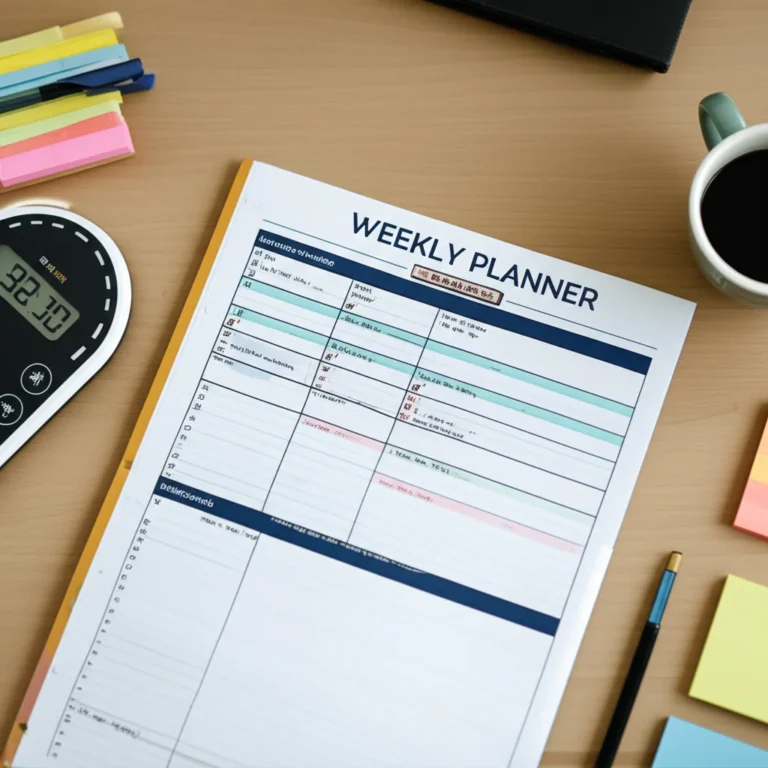Support our educational content for free when you buy through links on our site. Learn more
Master the 4A’s Lesson Plan in Math: 7 Steps to Success (2025) 🚀
Imagine walking into your math class and seeing every student’s eyes light up—not because math is easy, but because your lesson plan clicks perfectly with how they learn. That’s the magic of the 4A’s lesson plan in math. From aligning clear objectives to activating prior knowledge, acquiring new skills, and applying them hands-on, this approach transforms math lessons into engaging, effective experiences. Did you know activating prior knowledge can boost retention by up to 40%? That’s just one reason why the 4A’s are a game-changer for teachers and students alike.
In this comprehensive guide, we’ll unpack each phase of the 4A’s, share real teacher stories, offer sample templates, and reveal tech tools that make your lessons pop. Whether you’re a newbie or a seasoned educator, you’ll find actionable strategies to elevate your math instruction in 2025 and beyond. Ready to discover the secret sauce behind successful math lessons? Let’s dive in!
Key Takeaways
- The 4A’s framework (Align, Activate, Acquire, Apply) provides a clear, structured way to plan math lessons that engage and empower students.
- Activating prior knowledge is crucial—it primes students’ brains and increases retention significantly.
- Incorporating technology like Desmos, GeoGebra, and Kahoot! enhances each phase of the lesson plan.
- Differentiation within the 4A’s ensures all learners, regardless of ability, can thrive.
- Real teacher stories highlight the practical benefits and challenges of implementing the 4A’s approach.
👉 Shop recommended math teaching tools:
- Desmos: Amazon | Desmos Official Website
- GeoGebra: Amazon | GeoGebra Official Website
- Kahoot!: Amazon | Kahoot! Official Website
Unlock the full potential of your math lessons with the 4A’s—your students will thank you!
Table of Contents
- Quick Tips and Facts About 4A’s Lesson Plan in Math ⚡
- The Evolution and Background of the 4A’s Approach in Math Education 📚
- What Exactly Is the 4A’s Lesson Plan? Breaking Down Each ‘A’ 🔍
- 1. Aligning Objectives: Setting Clear Math Learning Goals 🎯
- 2. Activating Prior Knowledge: Connecting Math Concepts to What Students Know 🔗
- 3. Acquiring New Knowledge: Engaging Strategies for Teaching Math Topics 📈
- 4. Applying Skills: Hands-On Math Activities and Real-Life Problem Solving 🧩
- Crafting a Detailed 4A’s Lesson Plan in Mathematics: Step-by-Step Guide 📝
- Sample 4A’s Lesson Plan Templates for Different Math Topics 📂
- Common Challenges and How to Overcome Them When Using the 4A’s Approach 🚧
- Benefits of Using the 4A’s Lesson Plan in Math: What Teachers and Students Say 💬
- Integrating Technology with the 4A’s Lesson Plan: Tools and Apps That Work 🔧
- 4A’s Lesson Plan vs. Other Math Teaching Frameworks: A Comparative Analysis ⚖️
- Tips for Differentiating the 4A’s Lesson Plan for Diverse Learners 🌈
- Real Teacher Stories: Successes and Lessons Learned Using the 4A’s Method 📖
- Conclusion: Mastering Math with the 4A’s Lesson Plan 🚀
- Recommended Links for Further Exploration 🔗
- FAQ: Your Burning Questions About the 4A’s Lesson Plan Answered ❓
- Reference Links and Resources for Deep Dives 📚
Quick Tips and Facts About 4A’s Lesson Plan in Math ⚡
Welcome to the world of the 4A’s lesson plan in math—a powerhouse strategy that’s been lighting up classrooms and transforming how students grasp math concepts. At Teacher Strategies™, we’ve seen firsthand how this approach turns math from a daunting mountain into a climbable hill. Ready for some quick nuggets before we dive deep? Here you go:
- ✅ 4A’s stands for Align, Activate, Acquire, Apply—a sequence that scaffolds learning effectively.
- ✅ It’s grounded in constructivist theory, encouraging students to build on prior knowledge.
- ✅ Perfect for teaching complex math topics like place value, integers, geometry, and more.
- ✅ Encourages active student participation and collaboration.
- ✅ Works well with differentiated instruction to meet diverse learner needs.
- ❌ Not a one-size-fits-all; requires thoughtful planning and adaptation.
- ✅ Integrates well with technology tools like Kahoot!, GeoGebra, and Desmos.
- ✅ Supported by the K to 12 Curriculum Guide and widely used in Philippine classrooms.
Fun fact: According to a study by Edutopia, activating prior knowledge can increase retention by up to 40%! That’s why the 4A’s approach starts with Activating what students already know.
Curious about how each “A” works? Let’s unravel the magic next! (Hint: It’s more than just a catchy acronym.)
The Evolution and Background of the 4A’s Approach in Math Education 📚
Before we get into the nuts and bolts, let’s take a quick stroll down memory lane. The 4A’s lesson plan is not just a random checklist; it’s a product of decades of educational research and classroom wisdom.
Origins and Theoretical Roots
The 4A’s approach is inspired by constructivist learning theories championed by educational giants like Jean Piaget and Lev Vygotsky. It emphasizes that learners construct knowledge actively rather than passively absorbing facts. The 4A’s—Align, Activate, Acquire, Apply—were formalized to give teachers a clear, manageable framework to translate theory into practice.
Adoption in Math Education
Math educators found the 4A’s especially useful because math concepts often build on each other. For example, understanding place value (our favorite example from the Scribd detailed lesson plan) requires activating prior knowledge of digits and their meanings before acquiring new knowledge about hundreds, tens, and ones.
The Philippine Department of Education officially incorporated the 4A’s approach into the K to 12 curriculum guide, making it a staple in many classrooms. Teachers report that it helps students engage deeply and retain concepts longer.
Want to see how the 4A’s break down in practice? Let’s get to the heart of the lesson plan!
What Exactly Is the 4A’s Lesson Plan? Breaking Down Each ‘A’ 🔍
If you’ve ever wondered what makes the 4A’s tick, here’s the scoop. Each “A” is a phase in the lesson plan designed to scaffold learning and keep students hooked.
1. Aligning Objectives: Setting Clear Math Learning Goals 🎯
Think of Aligning as your GPS for the lesson. You set clear, measurable objectives that tie directly to curriculum standards. For example, “Students will be able to identify the place value of digits in a three-digit number” is a crystal-clear goal.
Why it matters:
- Keeps lesson focused and purposeful.
- Helps students understand what they are expected to learn.
- Guides assessment and feedback.
2. Activating Prior Knowledge: Connecting Math Concepts to What Students Know 🔗
Before diving into new content, you tap into students’ existing mental frameworks. This might involve asking questions like, “What do you remember about tens and ones?” or showing a quick visual aid.
Benefits:
- Builds confidence by connecting new info to familiar ideas.
- Prepares the brain for new learning.
- Encourages participation.
3. Acquiring New Knowledge: Engaging Strategies for Teaching Math Topics 📈
Here’s where the magic happens! You introduce new concepts using a variety of methods—storytelling, visuals, manipulatives, or interactive tech tools like Desmos or GeoGebra.
Pro tips:
- Use real-world examples to make abstract concepts concrete.
- Incorporate multimedia to cater to different learning styles.
- Keep it interactive to maintain engagement.
4. Applying Skills: Hands-On Math Activities and Real-Life Problem Solving 🧩
Finally, students get to apply what they’ve learned through exercises, group work, or projects. This could be solving word problems, creating models, or even gamified quizzes.
Why it’s crucial:
- Reinforces learning through practice.
- Develops critical thinking and problem-solving skills.
- Provides opportunities for formative assessment.
Crafting a Detailed 4A’s Lesson Plan in Mathematics: Step-by-Step Guide 📝
Ready to roll up your sleeves? Here’s how to build a detailed 4A’s lesson plan that will wow your students and administrators alike.
| Step | Action | Tips from Teacher Strategies™ Experts |
|---|---|---|
| 1 | Set Clear Objectives (Align) | Use SMART goals: Specific, Measurable, Achievable, Relevant, Time-bound. Example: “By the end of the lesson, students will identify place values in three-digit numbers with 90% accuracy.” |
| 2 | Plan Activation Activities | Use quick warm-ups like KWL charts (Know, Want to know, Learned) or brainstorming sessions. Visual aids like charts or videos work wonders. |
| 3 | Design Acquisition Phase | Prepare engaging content: slides, manipulatives, or interactive apps. Incorporate storytelling or real-life scenarios to make math relatable. |
| 4 | Create Application Tasks | Design group activities, problem-solving exercises, or math games. Include formative assessments like exit tickets or quizzes. |
| 5 | Prepare Assessment and Reflection | Plan how to check for understanding and gather student feedback. Reflect on what worked and what to improve next time. |
Pro tip: Use lesson planning tools like Planboard or Common Curriculum to organize your 4A’s plan efficiently.
Sample 4A’s Lesson Plan Templates for Different Math Topics 📂
To make your life easier, here are some tried-and-true templates for popular math topics using the 4A’s approach. These templates are inspired by real lesson plans shared on Scribd and SlideShare.
| Math Topic | Align Objective Example | Activate Activity | Acquire Strategy | Apply Activity |
|---|---|---|---|---|
| Place Value (3-digit numbers) | Identify place values of digits in 3-digit numbers | Show pictures of objects grouped in hundreds, tens, and ones | Use charts and number blocks to explain place values | Solve word problems involving place values |
| Division of Integers | Divide integers with correct signs | Review multiplication of integers | Use number lines and interactive games | Group problem-solving with integer division |
| Circles and Geometry | Identify parts of a circle (radius, diameter, circumference) | Discuss everyday circular objects | Use diagrams and GeoGebra app | Measure and draw circles using compasses |
| Fractions | Understand and represent fractions | Use pizza slices or pie charts | Visual fraction models and videos | Create fraction stories and solve fraction problems |
Teacher tip: Customize these templates based on your students’ grade level and interests. For more ideas, check out our Instructional Strategies and Lesson Planning categories.
Common Challenges and How to Overcome Them When Using the 4A’s Approach 🚧
No strategy is without its bumps in the road. The 4A’s approach is powerful but can be tricky if you’re not prepared. Here’s what teachers often face and how to tackle it:
| Challenge | Why It Happens | Solutions from Teacher Strategies™ |
|---|---|---|
| Students stuck in Activation phase | Prior knowledge gaps or disengagement | Use varied activation methods: games, visuals, or peer discussions to spark interest |
| Acquisition phase feels too long or boring | Overloading with info or lack of interaction | Break content into bite-sized chunks; use multimedia and hands-on activities |
| Application tasks too difficult or too easy | Mismatch with students’ skill levels | Differentiate tasks; provide scaffolds or enrichment activities |
| Time management issues | Underestimating time needed for each phase | Plan realistic timings; use timers; prioritize key activities |
| Assessment doesn’t reflect learning | Poorly aligned objectives and tasks | Align assessments strictly with objectives; use formative checks throughout |
Remember, flexibility is your best friend. Adapt the 4A’s to your unique classroom context. For more on adapting lessons, visit our Differentiated Instruction hub.
Benefits of Using the 4A’s Lesson Plan in Math: What Teachers and Students Say 💬
Don’t just take our word for it! Here’s what educators and learners have shared about the 4A’s approach:
Teacher Testimonials
“Using the 4A’s helped me organize my lessons better and keep students engaged throughout. The activation phase really sets the tone!” — Ms. Lopez, Grade 3 Teacher
“I love how the application phase encourages collaboration. My students become little math detectives solving real problems.” — Mr. Santos, Math Coach
Student Feedback
“I used to hate math, but now I understand it better because we start with what I already know.” — Ana, Grade 4 Student
“The activities are fun, especially when we work in groups and use apps like GeoGebra.” — Miguel, Grade 6 Student
Research-Backed Benefits
- Improved student engagement and motivation (source)
- Higher retention rates due to active learning phases
- Better alignment with curriculum standards and assessments
Integrating Technology with the 4A’s Lesson Plan: Tools and Apps That Work 🔧
Technology can turbocharge your 4A’s lesson plan. Here’s how to blend tech tools seamlessly into each phase:
| 4A Phase | Recommended Tools | How to Use Them |
|---|---|---|
| Align | Google Classroom, Planboard | Share objectives and lesson plans with students and parents |
| Activate | Kahoot!, Quizizz | Quick quizzes to activate prior knowledge and spark interest |
| Acquire | Desmos, GeoGebra, YouTube Edu | Interactive graphs, visualizations, and instructional videos |
| Apply | Nearpod, Padlet, Google Forms | Collaborative problem-solving, exit tickets, and formative assessments |
Teacher tip: Start small by integrating one tool per lesson and build from there. For example, use Kahoot! for a fun activation quiz, then move to GeoGebra for acquisition activities.
4A’s Lesson Plan vs. Other Math Teaching Frameworks: A Comparative Analysis ⚖️
Wondering how the 4A’s stack up against other popular frameworks like the 7E’s model or the gradual release of responsibility? Here’s a quick comparison:
| Framework | Strengths | Weaknesses | Best For |
|---|---|---|---|
| 4A’s (Align, Activate, Acquire, Apply) | Clear, easy-to-follow phases; strong focus on prior knowledge and application | May feel linear; requires careful timing | Elementary to middle school math lessons |
| 7E’s (Elicit, Engage, Explore, Explain, Elaborate, Evaluate, Extend) | Comprehensive; encourages deep exploration | Complex to plan; time-consuming | Science and math integration; inquiry-based learning |
| Gradual Release (I do, We do, You do) | Scaffolded independence; flexible | Less explicit focus on activating prior knowledge | Differentiated classrooms; skill mastery |
As one educator put it on SlideShare, “The 4A’s approach is a fantastic bridge between traditional and inquiry-based teaching, perfect for busy teachers who want structure without rigidity.”
Tips for Differentiating the 4A’s Lesson Plan for Diverse Learners 🌈
Every classroom is a mosaic of learners with unique needs. Here’s how to tailor the 4A’s approach to fit everyone:
- Align: Set tiered objectives—basic, proficient, and advanced—to accommodate different readiness levels.
- Activate: Use varied activation strategies—visuals for visual learners, discussions for auditory learners, and manipulatives for kinesthetic learners.
- Acquire: Provide multiple representations of math concepts—videos, texts, hands-on activities. Use tools like Read&Write for students with reading difficulties.
- Apply: Offer choice in application tasks—some students may prefer written problems, others hands-on projects or digital games.
Pro tip: Use formative assessments during the application phase to adjust instruction on the fly. For more on this, explore our Differentiated Instruction resources.
Real Teacher Stories: Successes and Lessons Learned Using the 4A’s Method 📖
Nothing beats hearing from the trenches! Here are some real stories from teachers who’ve embraced the 4A’s:
“I started using the 4A’s for teaching place value, inspired by a detailed lesson plan I found on Scribd. The activation phase sparked lively discussions, and students were excited to apply their knowledge in group activities. One student even said, ‘I finally get why the 4 is in the hundreds place!’” — Ms. Reyes, Grade 2 Teacher
“Initially, I struggled with timing, especially during the acquisition phase. But after incorporating tech tools like Desmos and Kahoot!, lessons became more interactive and manageable. The 4A’s helped me structure lessons that cater to both fast and slow learners.” — Mr. Cruz, Math Coach
“The best part? Students started showing more confidence in math and even asked for more challenging problems during the apply phase. It’s rewarding to see them take ownership of their learning.” — Ms. Santos, Grade 5 Teacher
Want to read more inspiring stories and practical tips? Check out our Instructional Coaching section for ongoing support and ideas.
Conclusion: Mastering Math with the 4A’s Lesson Plan 🚀
After our deep dive into the 4A’s lesson plan in math, it’s clear why this approach has become a favorite among educators worldwide. The structured yet flexible framework—Align, Activate, Acquire, Apply—provides a roadmap that keeps lessons focused, engaging, and effective. From setting clear objectives to activating prior knowledge, introducing new concepts, and applying skills through hands-on activities, the 4A’s cover all the bases for meaningful math learning.
Positives:
- Encourages active student participation and collaboration.
- Supports differentiated instruction and diverse learning styles.
- Integrates well with technology and real-world applications.
- Aligns closely with curriculum standards for measurable outcomes.
Negatives:
- Requires careful planning and time management.
- Can feel linear if not adapted creatively.
- Demands teacher flexibility and ongoing reflection.
Our recommendation? If you’re looking for a proven, research-backed strategy to elevate your math teaching, the 4A’s lesson plan is a must-try. Pair it with tech tools like Desmos or GeoGebra and customize it to your students’ needs for maximum impact. As we hinted earlier, activating prior knowledge isn’t just a fancy step—it’s a game-changer for retention and engagement!
Ready to transform your math lessons? The 4A’s are your trusty guide.
Recommended Links for Further Exploration 🔗
Looking to equip yourself with the best resources to implement the 4A’s lesson plan? Here are some top picks:
-
Books on Math Instruction and Lesson Planning:
- “Mathematics Formative Assessment: 75 Practical Strategies for Linking Assessment, Instruction, and Learning” by Page Keeley — Amazon
- “Teaching Mathematics in the Visible Learning Classroom” by John Hattie, Douglas Fisher, and Nancy Frey — Amazon
- “How to Differentiate Instruction in Academically Diverse Classrooms” by Carol Ann Tomlinson — Amazon
-
Tech Tools for Math Teaching:
- Desmos: Official Website | Amazon Search
- GeoGebra: Official Website | Amazon Search
- Kahoot!: Official Website | Amazon Search
-
Lesson Planning Platforms:
- Planboard: Official Website
- Common Curriculum: Official Website
👉 Shop these resources on:
- Amazon | Walmart | Etsy
FAQ: Your Burning Questions About the 4A’s Lesson Plan Answered ❓
What are the key components of a 4A’s lesson plan in math and how can they be applied to promote student engagement?
The 4A’s stand for Align, Activate, Acquire, and Apply. Each component serves a vital role:
- Align: Establishes clear learning objectives aligned with curriculum standards, giving students a roadmap of what to expect.
- Activate: Engages students by connecting new content to their prior knowledge, sparking curiosity and readiness to learn.
- Acquire: Introduces new concepts through interactive and varied teaching methods, catering to different learning styles.
- Apply: Provides opportunities for students to practice and apply skills in meaningful contexts, reinforcing learning and building confidence.
Applying these components promotes engagement by making lessons purposeful, interactive, and relevant. For example, activating prior knowledge with a quick quiz or discussion hooks students immediately, while application tasks like group problem-solving foster collaboration and deeper understanding.
How can teachers use the 4A’s lesson plan framework to differentiate math instruction for students with varying learning needs?
Differentiation is baked into the 4A’s framework:
- During Align, set tiered objectives to challenge students at different levels.
- In Activate, use diverse strategies—visuals, discussions, manipulatives—to reach all learners.
- For Acquire, provide multiple representations of concepts (videos, hands-on activities, texts).
- In Apply, offer choices in tasks and scaffold support as needed.
This flexibility allows teachers to tailor lessons without losing structure. Formative assessments during the Apply phase help identify students’ needs and inform ongoing differentiation.
What role does assessment play in a 4A’s lesson plan for math, and how can teachers use data to inform instruction and drive student success?
Assessment is integral throughout the 4A’s:
- Align sets the criteria for success.
- Activate can include informal checks to gauge prior knowledge.
- Acquire benefits from formative assessments to monitor understanding during instruction.
- Apply provides summative or formative data through tasks and projects.
Teachers can use this data to identify misconceptions, adjust pacing, and provide targeted interventions. Regular feedback loops ensure students stay on track and feel supported.
How can the 4A’s lesson plan framework be used to integrate technology and other innovative strategies into math instruction to enhance student learning outcomes?
Technology fits naturally into each phase:
- Use platforms like Google Classroom to share objectives (Align).
- Engage students with interactive quizzes on Kahoot! or Quizizz (Activate).
- Introduce concepts with dynamic tools like Desmos and GeoGebra (Acquire).
- Facilitate collaborative problem-solving with apps like Nearpod or Padlet (Apply).
Innovative strategies such as gamification, flipped classrooms, and blended learning can also be layered into the 4A’s, making math lessons more engaging and effective.
How does the 4A’s lesson plan approach support collaboration and teamwork among students in math classes?
The Apply phase especially encourages collaboration by involving group activities and problem-solving tasks. This builds communication skills, peer learning, and collective reasoning. Teachers can design tasks that require students to explain their thinking, debate solutions, and work together to solve complex problems, fostering a community of learners.
Can the 4A’s lesson plan be adapted for online or hybrid math teaching environments?
Absolutely! The 4A’s framework is flexible and can be adapted for virtual classrooms. For example:
- Align: Share clear objectives via LMS platforms.
- Activate: Use live polls or discussion boards to engage students.
- Acquire: Deliver content through recorded videos or interactive simulations.
- Apply: Assign online collaborative projects or virtual breakout room activities.
Using tools like Zoom, Google Meet, and collaborative apps makes the 4A’s approach effective even when teaching remotely.
Reference Links and Resources for Deep Dives 📚
- Detailed Lesson Plan in Mathematics Using 4A’s Approach | PDF (Scribd)
- K to 12 Curriculum Guide (Philippines)
- Edutopia on Constructivist Learning
- Desmos Official Website
- GeoGebra Official Website
- Kahoot! Official Website
- Planboard Lesson Planning Tool
- Common Curriculum Lesson Planning
- Teacher Strategies™ Instructional Strategies
- Teacher Strategies™ Lesson Planning
- Teacher Strategies™ Differentiated Instruction
- Teacher Strategies™ Instructional Coaching





